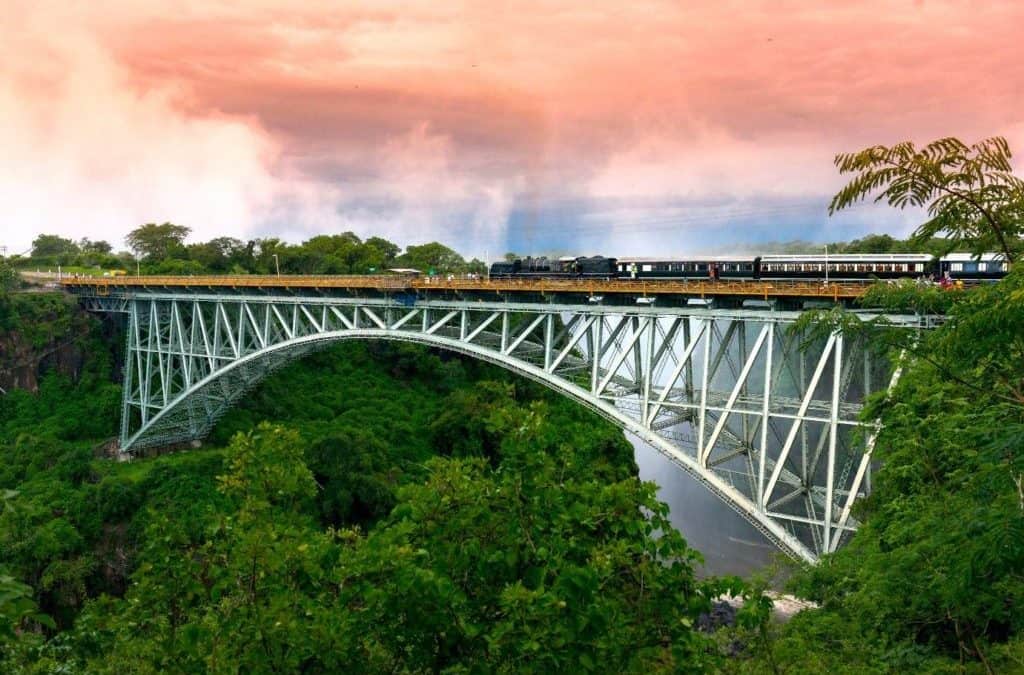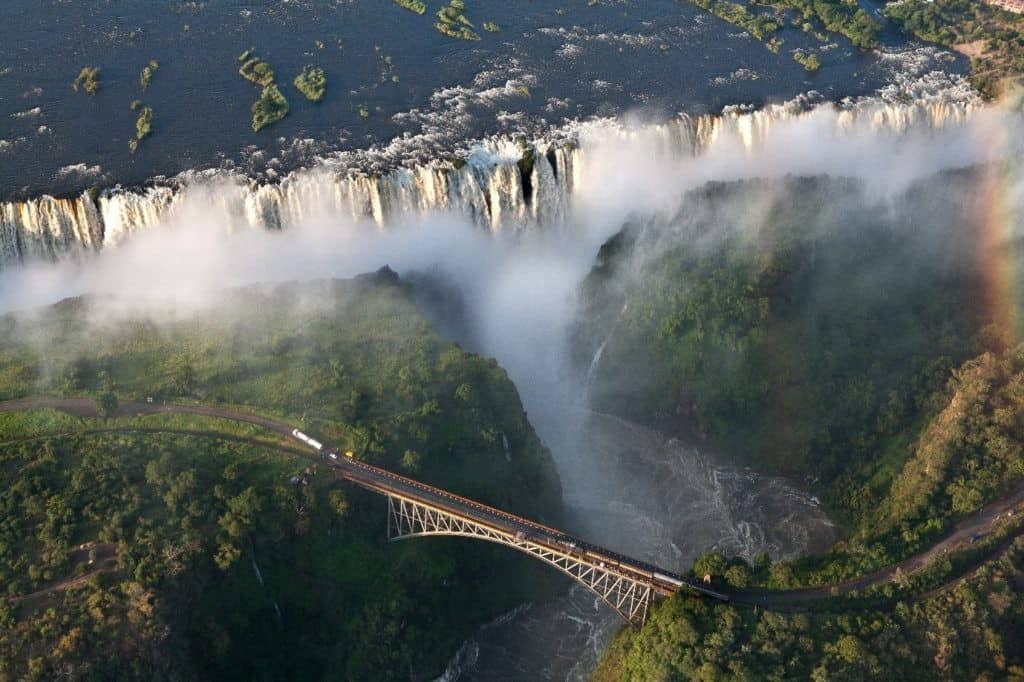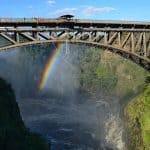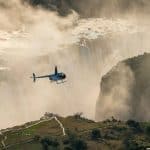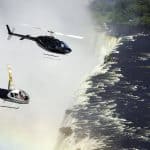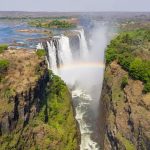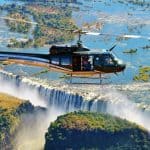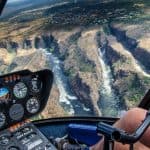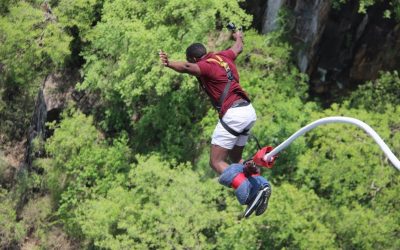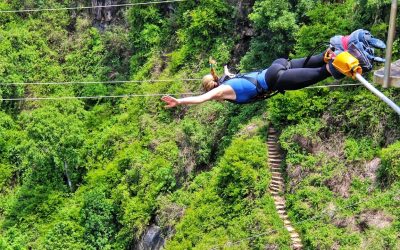Table of Contents
Victoria Falls Bridge Activities
There are many Victoria Falls Bridge Activities you can partake in during your trip to the area. The bridge itself is an exciting and memorable experience. Built over the Second Gorge, the bridge offers a great view of the falls. There are several tours and attractions you can take advantage of while you are here. But if you don’t have the time to take these tours, you can also just walk along the sidewalk and enjoy the views.
Variety of Bridge Activities
The Flying Fox, Bungee Jump, Zip Line, and Bridge Slide are just some of the options for Victoria Falls Bridge Activities. All of these activities are offered in the Lookout Café and can be booked well in advance. Once you’ve chosen your activity, be sure to plan your trip to coincide with your visit. Then, get ready to take on a thrilling new experience! Whether you’re looking for an adrenaline rush or a relaxing moment, Bridge Activities can help you have an unforgettable time!
The best way to appreciate the views is from the lookout. Once you’ve climbed up to the top, you’ll be greeted with a breathtaking view. You’ll be greeted by the gorgeous waterfalls below and can take pictures of your journey. Once you’ve finished, head back to the cafe for a meal and a drink before hitting the Falls. Afterwards, enjoy your time overlooking the river.
Solo or Tandem Free Fall
Alternatively, if you don’t want to do the free-fall alone, you can take a tandem slide. It is similar to bungee jumping but involves a single person. Before embarking on the slide, passengers must check-in at the middle of the bridge. Once seated, the operator will give you a safety talk before strapping you in. A fun way to spend an afternoon is to try the Victoria Falls zip line.
If you’re afraid of heights, consider a tandem slide. The experience involves a free fall from the Victoria Falls Bridge. Each ride requires a bungee cord to be strapped to the passengers’ ankles. The bungee cord is attached to each passenger and the slide takes place in the middle of the bridge. While there, you’ll be able to see the roaring falls from a unique perspective.
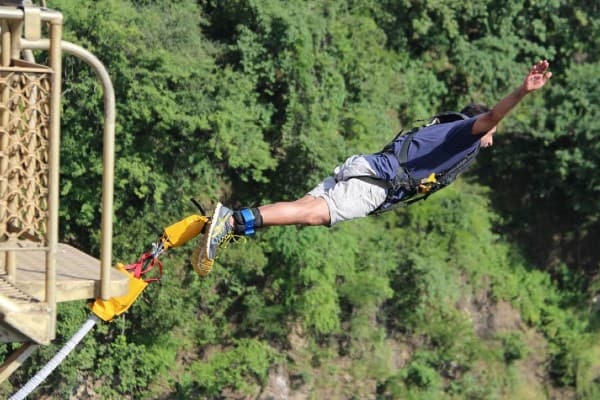
Experience Bungee Jumping in Victoria Falls
If you are looking for one of the most exhilarating adventure activities to experience, Bungee Jumping is for you!
Batoka George
There are many other activities that can be enjoyed at Victoria Falls. The skywalk is the most popular option for thrill-seekers. It is 111 meters high and is an unforgettable experience. If you’re afraid of heights, you should consider bungee jumping. The skywalk will take you over the Batoka Gorge and into the air. This is an adrenaline-filled experience that you will never forget. And it’s a perfect experience for families and couples.
There are several activities available in the region. Those who don’t want to try out the falls alone can take advantage of the tandem slide. This activity involves free-falling from the Victoria Falls Bridge and involves two people at a time. Before you can get on the slides, you must check-in at the middle of the bridge. Once you’re strapped in, the operators will give you a safety talk and strap you in.
Bungee jumping is another popular activity on the bridge. Although it’s not the highest bungee jump in the world, it is considered one of the most thrilling. There are no other activities as dangerous as bungee jumping. It is the most thrilling way to experience the falls. And it’s a thrill to be in the middle of such an adrenaline-filled experience. If you’re brave, you can even go for a bungee jumping tandem!
There are many other exciting activities on the bridge. If you’re feeling daring, try the bungee jump. While it’s not the highest in the world, it’s the most thrilling. It allows you to free-fall for about 4 seconds with a rope attached to your ankles. Make sure to do this activity with a group, as it’s a very intense experience. Then, try the other Victoria Falls Bridge Activities you can do to enjoy the Victoria Falls.
About Victoria Falls Bridge
The Victoria Falls Bridge spans the Zambezi River below the falls. It is a highly popular crossing point and was originally built to carry two railway lines.
However, it was reconstructed in 1929 and is now a busy border crossing point.
To understand how the bridge was constructed, you must first know that it began construction in 1904.
Construction of the Victoria Falls Bridge began in 1904
In 1904, the Victoria Falls Railway was built and the Victoria Falls Bridge followed. The bridge took a year and a half to complete and opened on September 12, 1905. Sir Charles Darwin’s son, Professor Sir George Darwin, officially opened the bridge on that date. Today, the bridge is listed as a Historic Civil Engineering Landmark by the American Society of Civil Engineers.
The bridge was designed by the consulting engineer George Andrew Hobson, who worked alongside Ralph Freeman. The engineers took into account the site’s appearance, the rigidity required for railway traffic, and the economy of construction. The bridge was the longest and highest railway bridge in the world when it was completed.
The bridge was built downstream from the falls and is supported by a 500-foot parabolic arch. Materials were transported by rail and cableway and erected in 14 months. Once completed, the bridge opened up central Africa and the copper mines of Zambia. The bridge was originally owned by the Rhodesia Railways but is now shared by the Zambian and Zimbabwean national railways. Northern Rhodesia and Southern Rhodesia became Zimbabwe after the latter gained majority rule.
Once the foundations were completed, engineers began constructing the main span of the bridge. The bridge’s side spans were built next, with end posts set on the rocks on either side of the river. Construction continued until December 1904, and the bridge opened on September 12, 1905.
It was originally intended to carry two railway lines
The Victoria Falls Bridge spans the Zambezi River in southern Africa, connecting the towns of Livingstone, Zambia, and Victoria Falls, Zimbabwe. The bridge is approximately 650 feet long and 400 feet above the river. The bridge was originally intended to carry two railway lines and was built by cantilevers anchored in the gorge’s edges. In 1929, the bridge was widened by 13 feet and the central span was raised five feet.
The Victoria Falls Bridge was designed by George Andrew Hobson, a consulting engineer, along with his fellow engineer, Ralph Freeman. In the original design, the bridge had two tracks positioned side-by-side, with overhanging walkways. The ribs were four-feet high and 6 feet apart, so that the rails would be virtually parallel to each other. In the 1950s, the bridge’s single track was moved to the central position. The overhanging walkways were removed sometime after this.
The first major phase of construction began in May 1904, with concrete foundations for the main bridge bearings being laid. The concrete was reinforced using steel rods and old rails, and was left to cure for six weeks. Once the concrete was ready, cement was shipped to the site from London in iron drums. The bridge’s steelwork was then advanced on either side of the river. Electric cranes were mounted on the cross-girders. Each crane had a radius of 30 feet, and a ten-ton capacity.
The Victoria Falls Bridge is one of the most iconic landmarks in the Victoria Falls area. It is an important link between the two countries of Zimbabwe and Zambia. It was initially intended to connect the coalfields of Hwange with the copper deposits in Zambia. At the time, the bridge was a busy border crossing for commercial trade.
It was reconfigured in 1929
The Victoria Falls Bridge is a 152-meter steel-lattice and two-hinged arch bridge that crosses the Zambezi River. Built-in 1904, it is located downstream from Victoria Falls and offers spectacular views of the falls and gorge. The bridge was reconfigured in 1929 to increase its width and height.
The bridge was originally named the Great Zambezi Bridge. Its design was published in 1907 by Hobson, George Andrew, and the Institute of Civil Engineers. The bridge was designed to withstand a 20-ton axle load, leaving room for future weight increases.
The work included strengthening the bottom chord members and adding side plates to existing members. New transverse lateral struts were also added. The project cost PS32,870. The work was completed in stages. The final section of the bridge was erected on 4 December 1929. During the construction, minor delays in traffic occurred over the bridge.
Since then, the bridge has been used as a rail link between Zambia and Zimbabwe and has been used for foot traffic. Its construction took 14 months and opened the copper mines in Zambia and central Africa. The bridge was originally owned by the Rhodesia Railways but is now jointly owned by the national railways of Zambia and Zimbabwe.
It is a busy border crossing
The Victoria Falls Bridge is a major border crossing between Zambia and Botswana. The bridge was originally designed by George Andrew Hobson. He then went on to form a firm called Freeman, Fox and Partners and submitted the final report for the bridge to the British Institute of Civil Engineers in 1907. Hobson’s design was shown to Cecil Rhodes during a 1901 meeting of the Institution of Civil Engineers.
Getting to the Victoria Falls from Zimbabwe requires a trip to Zambia. There are taxis available at the border crossing. It is also a good idea to book in advance. The road is rough dirt, so make sure you plan ahead and buy fuel if needed. Be prepared to spend at least an afternoon getting to the falls.
It takes about an hour to reach the Victoria Falls National Park from the border. If you plan to visit both Zambia and Zimbabwe, you’ll need to cross the bridge, which is located outside the park. Parking is available across the road from the main entrance. From there, you’ll walk about 10 minutes to the bridge. Once there, you’ll need to pass through customs in Zimbabwe. You’ll need to buy a Zimbabwe visa, which costs $30 USD, before you can enter Zambia.
While the Victoria Falls Bridge is a popular destination for tourists and locals alike, it’s also a busy border crossing between Zimbabwe and Zambia. Many international flights land in Livingstone, Zambia. From there, you’ll need a taxi to travel to the other side of the falls.
It is the world’s highest bungee jump
Jumping from the Victoria Falls Bridge is an unforgettable experience. A spectacular view of the river Victoria awaits you at the top of the bridge. After the jump, you can enjoy a snack from the Bridge Cafe, which offers an oasis of cool from the heat of the bridge. The Bridge Cafe also serves delicious burgers.
Hundreds of tourists pay PS80 to jump from the Victoria Falls Bridge, the world’s highest bungee jumping location. The jumping station sits in the middle of the Victoria Falls bridge, which spans the border of Zambia and Zimbabwe. The bridge is the highest commercial bungee jump in the world, according to the Zambian tourism board’s website. The jump offers an exhilarating free fall, with a view of the stunning gorge and the shimmering Zambezi.
The jump site is at the Victoria Falls Bridge, 111 meters above the Zambezi River. At this height, you will experience 4 seconds of pure adrenaline, with a breathtaking view of the waterfall and Zambezi River below. You must be at least 15 years old and have a valid passport to take the leap.
The Victoria Falls Bridge Bungee Jump is affiliated with Shearwater in Zimbabwe. First-time bungee jumpers will dive head first, and more experienced jumpers will attempt backflips, flips, and inward tucks. If you decide not to take the plunge, you can cancel your reservation and receive a full refund of your money. However, you must sign an indemnity form.
It is located directly above the Victoria Falls
The Victoria Falls Bridge connects Zambia and Zimbabwe. It is 650 feet long, 400 feet above the river, and almost 3,000 feet above sea level. It was built using cantilevers anchored to the gorge’s edge. It was initially built to carry two railway lines, and was eventually widened and raised.
The bridge offers incredible views of the Victoria Falls. It can be viewed from both sides of the Zambezi River. Early visitors must have been overwhelmed by the sight. The Victoria Falls is one of the world’s seven natural wonders and undoubtedly the most beautiful border crossing in the world.
The bridge’s construction began in May 1904. The main bridge bearings were set in place using concrete. Steel rods and old rails were used as reinforcements. It took six weeks for the concrete to harden. Cement was shipped from London in iron drums. The cement arrived at the site in good condition. The steelwork was then advanced from either bank. Electric cranes were mounted on the cross-girders. Each crane had a radius of 30 feet and a capacity of ten tons.
The bridge is 650 feet long and has a main arch that is 500 feet high. The bridge is 420 feet above the falls. The bridge is most impressive when viewed from the view point at the base of the Victoria Falls Hotel. Tourists can even bungee jump from the bridge.

